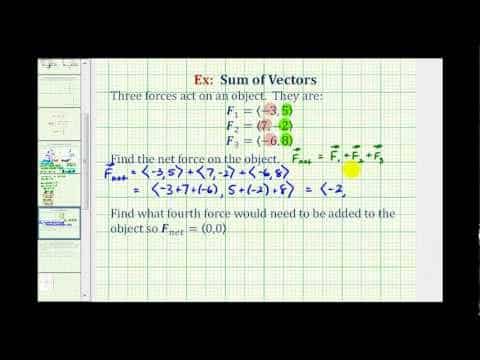Net force is the driving force behind an object’s acceleration. If the net force acting on an object is zero, the object remains at rest or moves in a straight line at a constant speed. Understanding the concept of net force is akin to unlocking the secrets of the universe’s motion. Mastering the art of determining net force is important for tackling physics problems with confidence.
Follow this guide on how to find net force to get started.
Table of contents
What is the formula for net force?
The net force formula is: Fnet = F1 + F2 + F3 + … + Fn
Where:
- Fnet is the net force acting on the object
- F1, F2, F3, …, Fn are the individual forces acting on the object
Read Also: How to Find Coterminal Angles | Definition and Application
How to find net force
The net force is the sum of all the forces acting on an object. It is a vector quantity, meaning that it has both magnitude and direction. To find net force:
- Identify all the forces acting on the object. This includes forces like gravity, friction, and air resistance.
- Draw a free-body diagram. This is a diagram that shows all the forces acting on the object and their directions.
- Break down any forces into their components. For example, if a force is acting at an angle, you can break it down into horizontal and vertical components.
- Add up all the forces in the x-direction and all the forces in the y-direction. The sum of the forces in the x-direction is the net force in the x-direction, and the sum of the forces in the y-direction is the net force in the y-direction.
- Find the magnitude of the net force using the Pythagorean theorem. The Pythagorean theorem is a^2 + b^2 = c^2, where a and b are the lengths of the legs of a right triangle, and c is the length of the hypotenuse. In this case, a and b are the net forces in the x-direction and y-direction, and c is the magnitude of the net force.
- Find the direction of the net force using trigonometry. The direction of the net force is the angle between the positive x-axis and the vector representing the net force.
Read Also: How to Find the Domain of a Function: A Guide for Math Enthusiasts
How to find net force calculator
To use a net force calculator, simply enter the following information:
- The magnitude of each force
- The direction of each force
- The units of measurement
Once you have entered all of the information, the calculator will calculate the net force and its direction.
Read Also: How to be Good at Math
How to find net force without acceleration
If an object is not accelerating, it means the net force acting upon it is zero. This implies that all the forces acting on the object are balanced, canceling each other out.
To find the net force without acceleration:
- Identify all the forces acting on the object: Carefully analyze the given scenario or problem to identify all the forces acting on the object.
- Sketch a free body diagram: A free body diagram is a visual representation of the forces acting on an object. It helps organize information and simplify calculations.
- Analyze force pairs: For each force, identify its opposing force. For instance, the force of gravity is opposed by the normal force of the surface on which the object rests.
- Equate opposing forces: Set the magnitude of each opposing force pair equal to each other. This represents the balanced state since there is no acceleration.
- Solve for unknown forces: If there are any unknown forces, use the equations obtained from the balanced force pairs to solve for their magnitudes or directions.
Frequently Asked Questions
Break down the force of gravity into components parallel and perpendicular to the incline. The net force is the vector sum of these components.
The formula for net force with weight is: Fnet=W
The SI unit of force is the newton, which is represented by the symbol N.
If the net force acting on an object is zero, the object remains at rest or moves in a straight line at a constant speed.
Yes, the net force can be negative. This occurs when the opposing forces acting on an object are greater than the accelerating forces.
Conclusion
Net force, the cornerstone of motion and acceleration, is a fundamental concept in physics. To calculate net force, apply the formula. This article is a guide on how to calculate net force with or without acceleration.
References
- Study.com – Finding the Net Force: Equation & Examples
- The Physics Classroom.com – Determining the Net Force
Recommendations
- How to Find Vertex of Parabola: Mathematical Acumen in Geometric Problem Solving
- How to Find Buried Treasure in Minecraft: Adventurous Secrets for Gaming Treasure Hunters
- How to Find Average Velocity: Dynamic Calculations for Physics Enthusiasts
- How to Find Molar Mass Accurately: A Guide on Chemistry Simplified
- How to Find the X Intercept: Mathematical Genius in Graph Analysis






